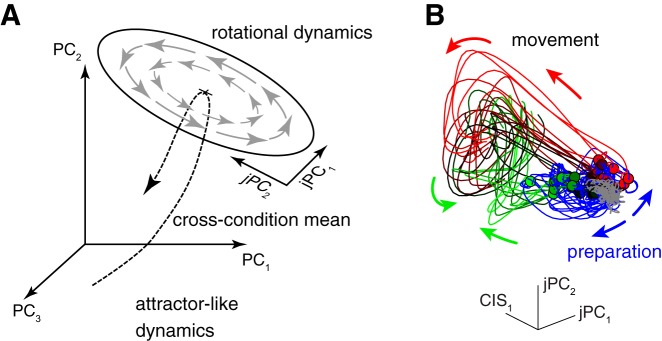Fig. 2.
Activity undergoes a large, condition-invariant change to a zone with oscillatory dynamics just before reaching movements in monkeys. A: illustration of the dynamical systems prediction that the neural state should be quite different during preparation vs. during movement. This is because there must be a large distance in firing rate space between the active, oscillatory dynamics needed to produce time-varying patterns during movement and the stable dynamics needed to keep the arm still during preparation. PC, principal component; jPC, component that captures rotational structure in the activity. [Reproduced with modification from Churchland et al. (2012).] B: recorded neural activity exhibits such a condition-invariant change, followed by oscillatory patterns. Each trace corresponds to a different reach, with trial-averaged activity plotted over time. Baseline activity is plotted in gray, preparatory activity in blue, and movement-epoch activity in shades of green and red. For the many different reaches tested, neural activity underwent a stereotyped translation in the dimension CIS1 (the first dimension of the condition-invariant signal). This was followed by rotations in state space, which correspond to oscillations in firing rates. [Reproduced with modification from Kaufman et al. (2016).]

